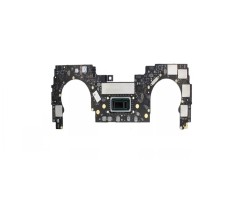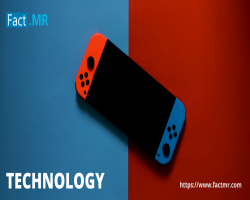The Precision Art of Laser Cutting: Transforming Ideas into Reality
Laser cutting has revolutionized manufacturing, design, and craftsmanship, blending precision with versatility to produce exceptional results across diverse industries.

The Precision Art of Laser Cutting: Transforming Ideas into Reality
Laser cutting has revolutionized manufacturing, design, and craftsmanship, blending precision with versatility to produce exceptional results across diverse industries. From intricate jewelry to aerospace components, this advanced technology continues to redefine what is possible. In this article, we delve into the fascinating world of laser cutting, exploring its mechanisms, applications, and the transformative impact it has on modern industries.
What is Laser Cutting? The Science Behind the Technology
Laser cutting is a material processing technique that employs a focused, high-powered laser beam to cut, engrave, or etch materials with exceptional accuracy. The process involves the laser generating intense heat, melting or vaporizing the target material along a pre-defined path. Assisted by gases like oxygen, nitrogen, or compressed air, the laser creates clean and precise cuts.
Key Components of a Laser Cutting System
-
Laser Source: Produces the concentrated beam of light.
-
Beam Delivery System: Guides the laser beam to the cutting head.
-
Cutting Head: Houses lenses and nozzles to focus the beam on the material.
-
Control Software: Enables intricate designs by directing the laser’s movements.
Applications of Laser Cutting Across Industries
Laser cutting is celebrated for its adaptability, finding applications in a wide range of sectors:
1. Manufacturing and Prototyping
In manufacturing, laser cutting ensures high precision and speed, making it ideal for creating components and prototypes. Industries like automotive and aerospace rely on this technology for cutting metals, composites, and specialty alloys with tight tolerances.
2. Art and Design
Artists and designers leverage laser cutting for its ability to produce intricate and detailed patterns. From custom home decor to wearable art, the creative possibilities are nearly endless.
3. Electronics
For producing compact and intricate electronic components, laser cutting excels in handling delicate materials like silicon and polyimide. It’s crucial in creating circuit boards and micro-electronic devices.
4. Healthcare
In the medical field, precision is paramount. Laser cutting is used to manufacture surgical instruments, implants, and stents with unparalleled accuracy.
Advantages of Laser Cutting Technology
Laser cutting offers numerous benefits over traditional cutting methods. These advantages include:
-
Unmatched Precision: The concentrated beam allows for highly detailed cuts, even in complex designs.
-
Versatility: Works with a wide array of materials, including metals, plastics, wood, glass, and textiles.
-
Efficiency: Faster cutting speeds reduce production times, enhancing overall productivity.
-
Minimal Waste: Non-contact processing reduces material distortion and waste.
-
Customizability: Easily adapts to unique and intricate designs through software programming.
How Laser Cutting Shapes Sustainability
Modern industries are increasingly prioritizing sustainability, and laser cutting contributes significantly to this shift:
-
Energy Efficiency: Advanced laser machines consume less energy than traditional machining tools.
-
Material Optimization: Precision cutting minimizes waste, maximizing resource use.
-
Recyclability: Residual material can often be recycled, reducing environmental impact.
Common Types of Laser Cutting Techniques
There are three primary laser cutting techniques, each tailored to specific materials and outcomes:
1. CO2 Laser Cutting
Best for non-metal materials like wood, acrylic, and plastics, CO2 lasers excel in cutting, engraving, and etching.
2. Fiber Laser Cutting
Highly efficient and suited for cutting metals, fiber lasers are the go-to choice for industrial applications requiring speed and precision.
3. Crystal Laser Cutting
Using neodymium-doped crystals, this method is ideal for high-power applications, including cutting thick metals and ceramics.
Future Trends in Laser Cutting Technology
As technology evolves, laser cutting continues to advance. Some emerging trends include:
-
AI and Automation: Integrating artificial intelligence enables self-optimizing laser systems, enhancing accuracy and reducing errors.
-
Micro-Laser Cutting: Perfect for industries requiring ultra-fine details, such as microelectronics and biomedical engineering.
-
Eco-Friendly Solutions: Development of greener technologies to further reduce environmental impact.
Tips for Selecting a Laser Cutting Service
If you’re considering laser cutting for your next project, keep the following factors in mind:
-
Material Compatibility: Ensure the service can handle your chosen material.
-
Precision Requirements: Verify their capability for intricate and detailed designs.
-
Turnaround Time: Check their lead times to match your project schedule.
-
Customer Support: Opt for services that provide design assistance and post-production support.
Conclusion:
Laser cutting has become an indispensable tool, empowering industries to push the boundaries of design and production. Its unparalleled precision, versatility, and efficiency make it a cornerstone of modern manufacturing and artistic endeavors alike. As this technology evolves, its potential will only continue to expand, opening doors to innovations we have yet to imagine.
What's Your Reaction?




















